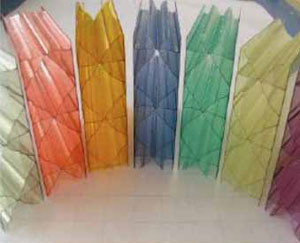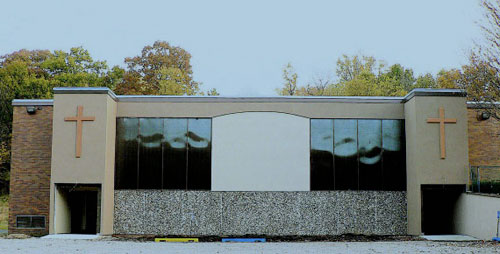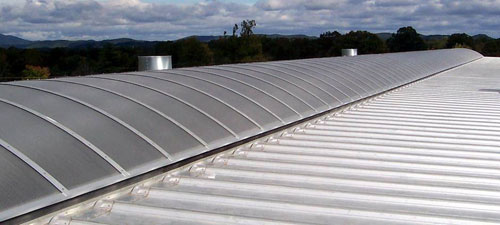Translucent Cellular Polycarbonate Delivers Design Versatility
Interior Panel Condensation
 |
Virtually any color can be provided, given sufficient quantity. However, the common colors are clear, opal and bronze tint. Photo courtesy of EXTECH/Exterior Technologies, Inc |
PCSS is known to allow condensation to build up inside the flutes under certain circumstances. Polycarbonate, unlike glass, is not a total vapor barrier. If PCSS is exposed for a long time to hot, humid air and then is exposed to significantly colder air, condensation can appear within the flutes (usually in only some flutes and normally near the bottom of the panel). Typically, this condensation dissipates within a day or two as the vapor level equalizes. To aid dissipation, some manufacturers place venting tape over the ends of the panels so as to allow small amounts of air to circulate within the flutes.
LEED® Benefits
Polycarbonates can contribute to LEED® points in Energy and Atmosphere, Materials and Resources, Indoor Environmental Quality and Innovation in Design categories. The bases for points are: * 100 percent recyclable material. Many companies use up to 20 percent post-consumer recycled materials in manufacturing polycarbonate, depending on the performance and clarity needs of the project. * Provide large horizontal and vertical expanses of daylighting. * Energy efficiency can be measured and verified using manufacturers' product data sheets. * Panels are lightweight and require less structural support. * Reduced transportation costs.
Design Versatility
PCSS offers design professionals many options for a multitude of applications:* Color choices range from clear, opal and blue to green, bronze, custom and dual-colors (one color on the inside and another on the outside). * Typical textures include smooth sheen or hammered crystal. * Wide range of thicknesses and structural strengths. * High strength and lighter weight allow longer spans and less support. * Sheets are easily curved using cold bending.
Framing (Improper installation)
As noted above, correct framing and fastening are critical for long-term installations of PCSS panels. Design professionals should seek input from manufacturers/fabricators on how framing and fastening details will compensate for PCSS properties such as soft surfaces and thermal movement—particularly if the project presents an innovative use of multiwall polycarbonate.
 |
The warping of the panels in this photo resulted from the use of perimeter framing which did not have sufficiently deep rabbets. Panels must be made long enough to stay engaged in cold weather. In the case of shallow rabbets, that makes them “bottom out” when they expand in hot weather. The solution is deep rabbets coupled with glazing that is cut to the proper length by the fabricator. Photo courtesy of EXTECH/Exterior Technologies, Inc |
 |
Elkamet Corporation, East Flat Rock, N.C., exemplifies proper framing and fastening of cold curved sheets. Photo courtesy of EXTECH/Exterior Technologies, Inc |









